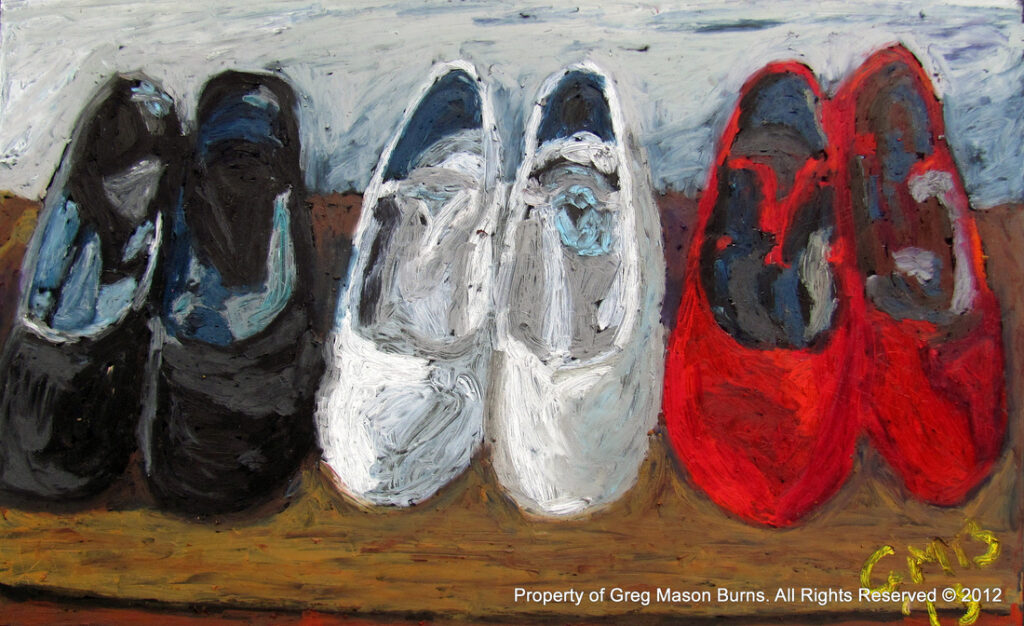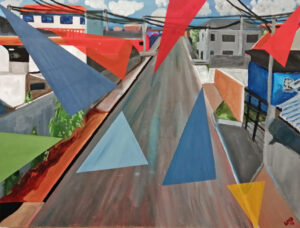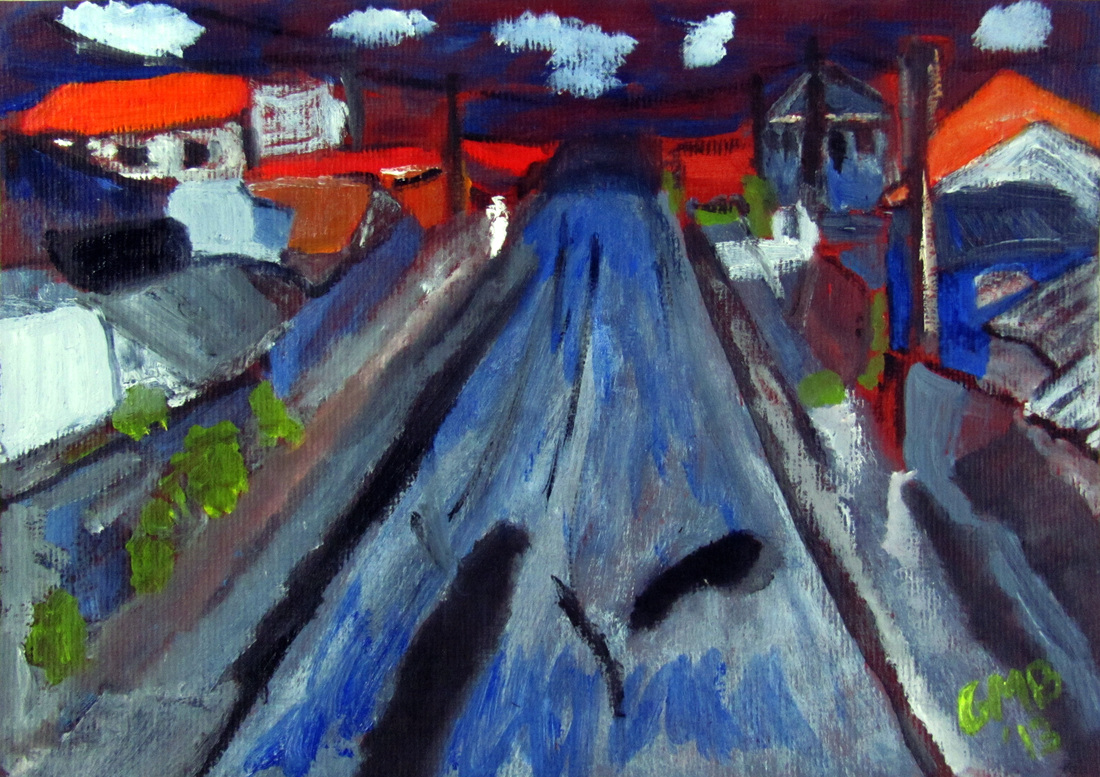
Zapatos de Flamenco – Oil Pastel on Glass
I decided on a new project to paint the streets of Curitiba, Brasil. I’m not choosing streets based on their fame or beauty, but more on their composition. I guess that’s beauty in the end, and I’m not sure what it means that many of the streets I chose ended up being smack dab in the middle of the favelas here, but either way it says something about how I choose objects. For example, I have a long-term project to document flamenco, but I’m not interested in painting a dancer, musician, or singer on stage. I’m much more interested in painting the bar where they hang out, their worn shoes, or the collapsing house that they grew up in. That’s flamenco to me, and that’s also composition to me as well. Composition isn’t just placement, but also topical perspective. But, painting is easy when you don’t know how. It’s the knowing that makes it difficult.

Rua Dr Rafael Simile Ribeiro – Finished painting
But I digress. This simple project will have about 7-10 canvas paintings, and I plan to do 4-6 studies on paper beforehand to get a feel for the colors. I can’t duplicate a painting that I’ve done before, so I don’t expect these studies to be transferred to canvas magically. But it’s funny because while the studies of the first painting turned out to be pretty nice (see below), the canvas has stymied me. The left side is nearly perfect; so much so that I’ve decided to not add windows to a building because the blank wall looks damn well. The left side is consistent and I believe it represents some of my best work, but the right side is wildly the opposite. I originally hoped that I could pound this out in a week, but it’s looking more like a month-long painting at least. It turns out that painting is hard.
Of course I knew this. I’m not naturally gifted like many doodlers are, for example. If you ask me to draw a cat right now it’ll be made of sticks. If I want to draw a good cat I need to really work at it, and that’s fine. I enjoy the process of ups and downs quite a bit. Even the suffering is good. But this isn’t my point. I believe it was Degas who once said that painting is easy when you don’t know how, but very difficult when you do. It’s a difficult concept to grasp as a painter, but I suppose all painters at least identify with it to some degree. As I progress in my abilities, I’m starting to have higher standards, to need specific tools, to mix paint to the right texture and consistency, to see a bad line from twenty feet away, or to know when to put the brush down and simply wait until I’m in the right frame of mind to identify what needs to come next. Perfect needs to feel right, and that feeling is becoming more and more powerful over time.
As someone who is always looking at the next achievement, it’s difficult to look back down the curve and see how steep it was. I guess this is a good thing. Looking back at this process, I can see what I needed to do to make this painting better. It had to become abstract. The studies were fine as they were, but the larger work, painted up to scale, was much less of a success, so it had to change, and I had to change as well. Painting is easy when you don’t know how, and sometimes one has to wait many years to figure out how to execute what you had in mind at the beginning. I was able to finish this one, final painting to end the project as a whole, but it turned out much differently than I expected.

Rua Dr Rafael Ribeiro, Study IV Oil on Paper (2013) 21 x 29 cm |

Rua Dr Rafael Ribeiro, Study I Oil on Paper (2013) 21 x 29 cm |